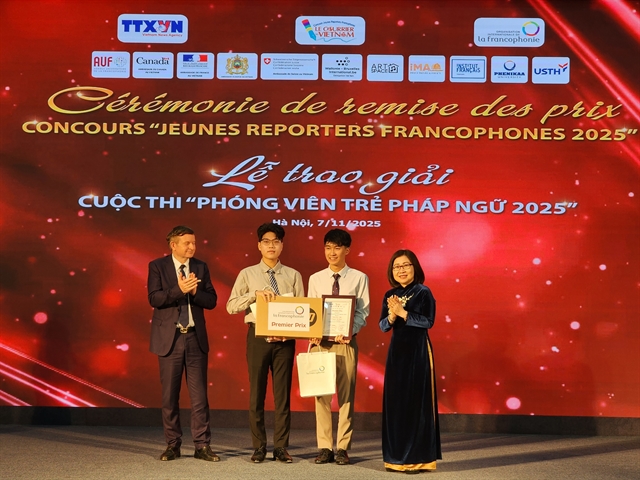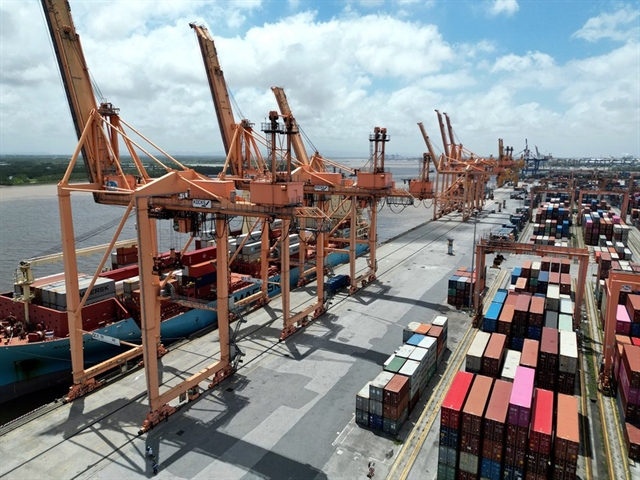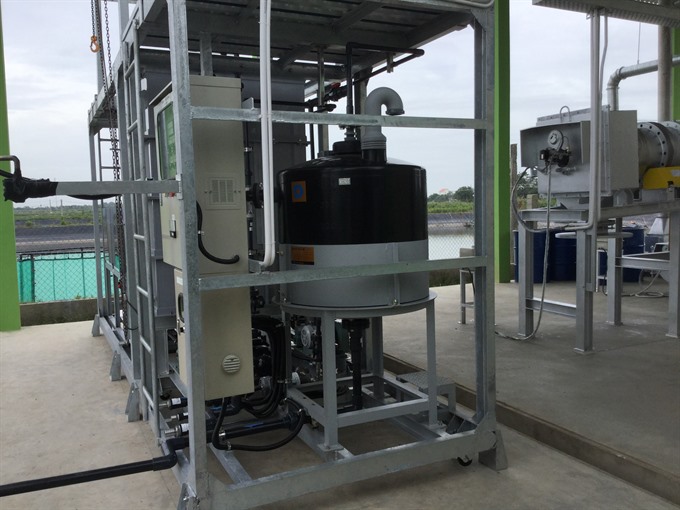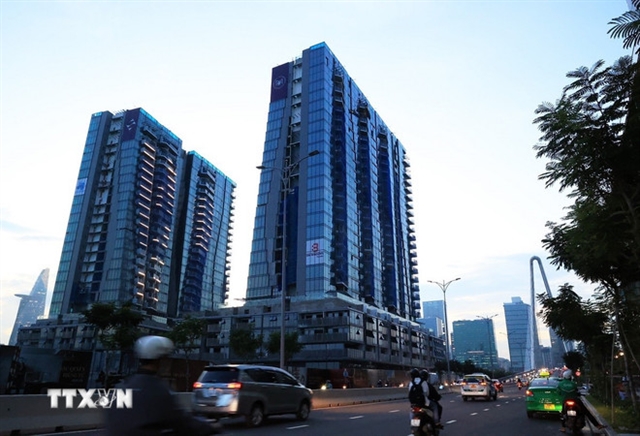 Society
Society

" />A new, hi-tech shrimp breeding model that generates electricity via biogas and deals effectively with sludge is being piloted in Bến Tre Province.
 |
| A closed-cycle shrimp farm model is being piloted in Bến Tre Province, helping reduce sludge waste and producing electricity via biogas. —VNS Photo Gia Lộc |
HCM CITY — A new, hi-tech shrimp breeding model that generates electricity via biogas and deals effectively with sludge is being piloted in Bến Tre Province.
The project, being carried out by Japanese and Vietnamese scientists in the Mekong Delta province, deploys the closed-cycle shrimp farm model, where sludge and other organic waste from shrimp ponds are mixed and put in a methane fermentation facility to produce biogas, which is desulfurized to create electricity.
The bioelectricity is supplied to a new aeration and air diffuser system in shrimp breeding, said Professor Takuya Kitaoka of Kyushu University.
The waste produced during the production of biogas is sent to a carbonization facility to produce charcoal, which is a soil improvement agent, boosting cultivation, he added.
Another new aspect of the model is that it uses a new aeration and air diffuser system which diffusers air from the pond’s bottom to its surface. This replaces the propellers currently used to create oxygen, but this is confined to the surface.
The piloted model is part of a project to promote sustainable development of rural areas by effective utilisation of bio-waste with highly efficient fuel cell technology.
The project is carried out under the Japanese government’s programme of science and technology research partnership for sustainable development. It uses non-refundable official development assistance from the Japanese government through the Japan International Co-operation Agency.
The project is carried out by several Vietnamese universities and institutes including the Institute for Nanotechnology-Việt Nam National University HCM City, the Kyushu University and other Japanese companies.
It has a total funding of more than US$3.6 million. It is expected to run for 60 months, from April 2015 to May 2020.
The model was first tested in a lab in Japan. The Vietnamese institute’s staff have received training in Japan, and a lab was set up in Việt Nam in September.
Nguyễn Văn Buội, deputy head of the Bến Tre Province Department of Agriculture and Rural Development, told Việt Nam News that the province has 35,000 hectares of shrimp farms this year, producing 45,000 tonnes of crustaceans.
The province aims to apply hi-tech in shrimp breeding to increase output and ensure stable growth, Buội said.
Development of shrimp farming needs to go along with environmental protection, he said, adding: “The Japanese hi-tech shrimp breeding model suits the province’s development trend.”
It also introduces a technology for more effective waste treatment, he said.
Several shrimp farms that do not have areas to hold sludge after harvesting often discharge it into nearby canals, causing water pollution, Buội said.
Moreover, sludge at several other farms are just stored and not treated to use for the next crop, which can lead to the development of potential pathogens for shrimps, he added.
“If the pilot project is successful, the province will expand it to other farms, and other provinces in the Mekong Region can follow,” he said.
Associate Prof Đặng Mậu Chiến, who heads the Institute for Nanotechnology-Việt Nam National University HCM City, said they are planning to carry out the new model for fish breeding as well. —VNS




